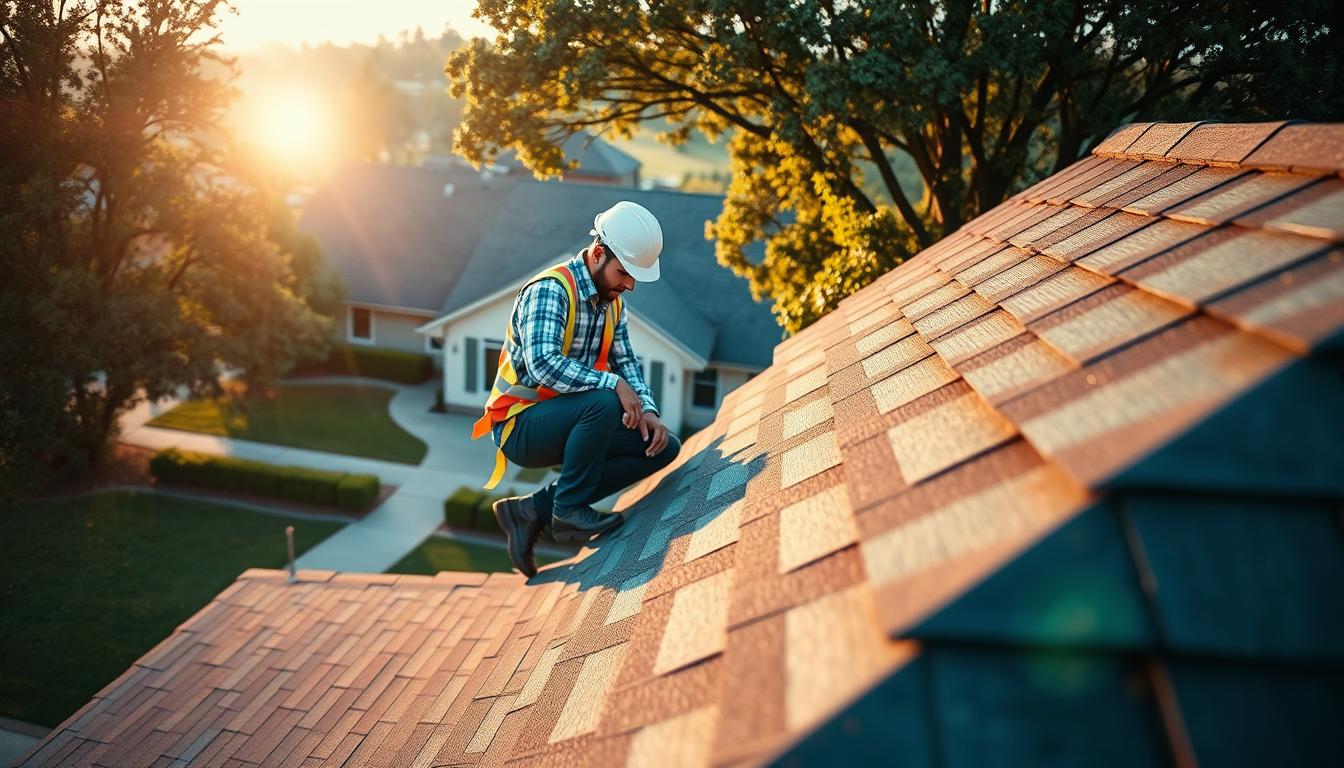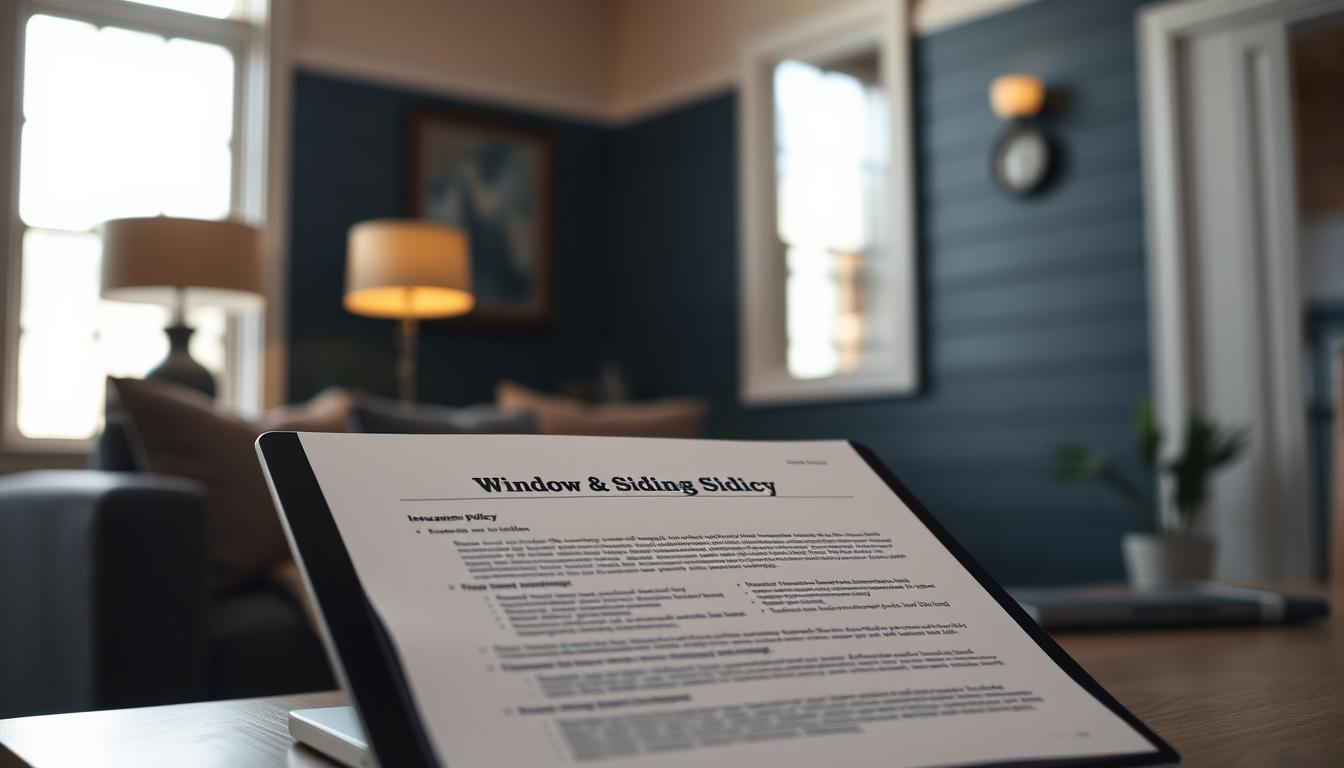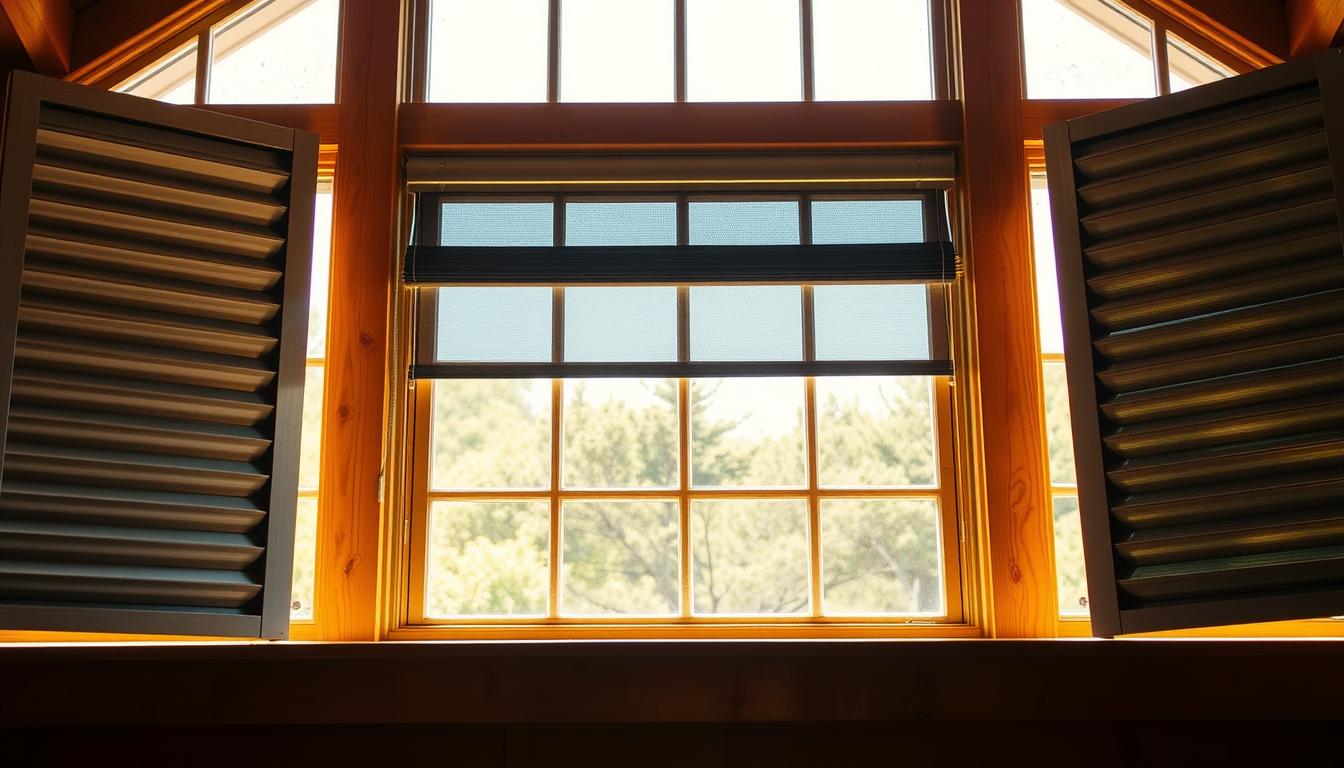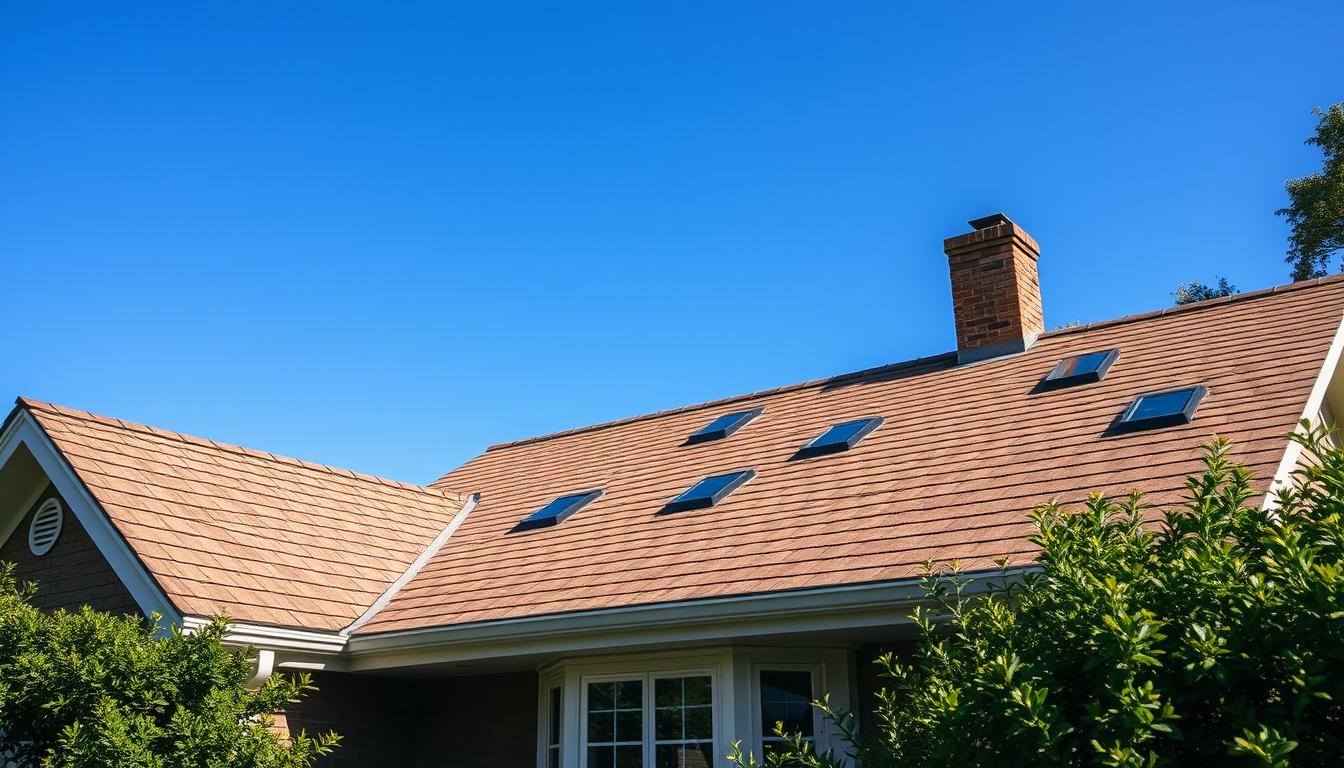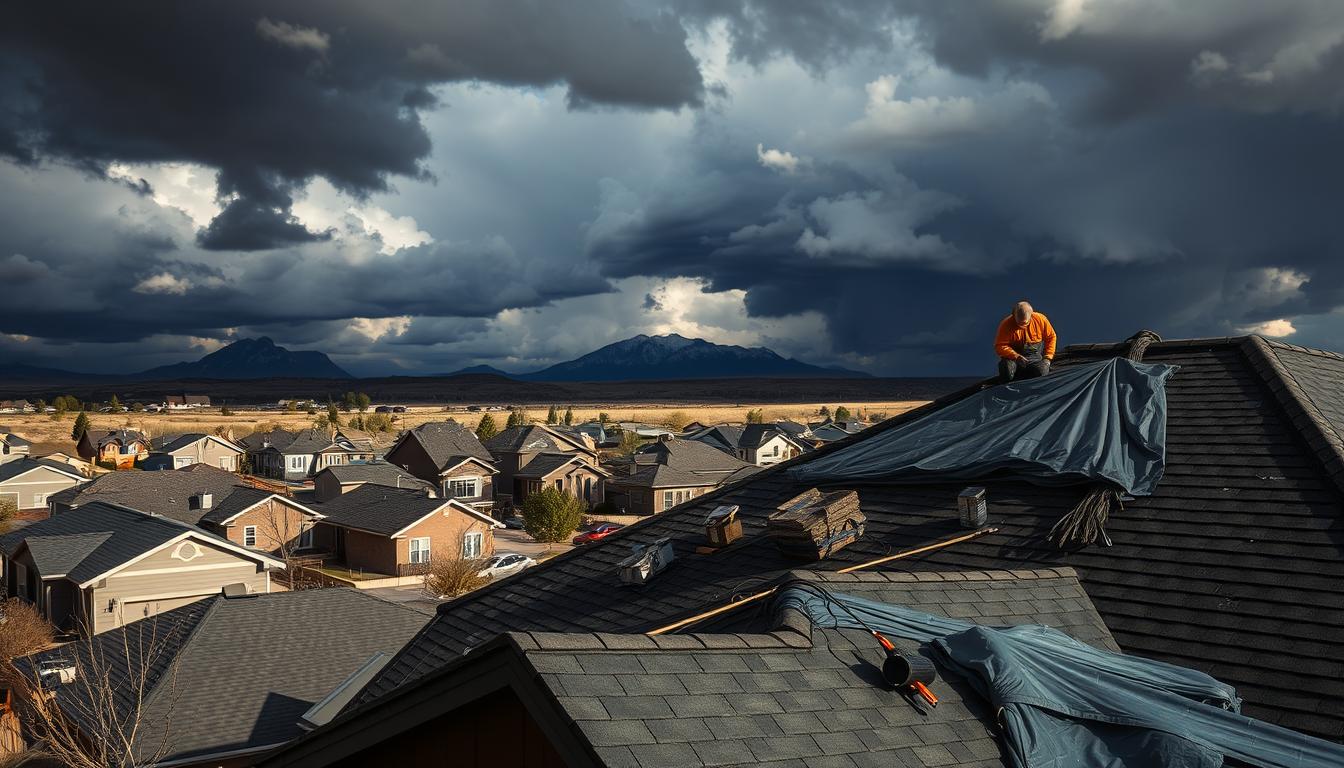Dealing with roofing insurance claims can be very confusing for homeowners. The Rich Co Inc, based in Colorado Springs, helps homeowners get through this maze. They focus on the differences between ACV and RCV in roofing insurance claims.
Roof insurance is a key part of homeowners insurance. It protects against sudden damage like wind or hail. Knowing your policy is very important when your roof gets damaged.
More than 34% of property insurance claims are because of roof damage. It’s vital to understand how different policies work. The main difference is how ACV and RCV policies pay out to homeowners.
Key Takeaways
- ACV policies factor in roof depreciation, potentially reducing claim payouts
- RCV policies provide more comprehensive coverage for roof replacements
- Roof age significantly impacts insurance claim settlements
- Understanding policy details can prevent unexpected out-of-pocket expenses
- Professional guidance can help navigate complex insurance claims
The Basics of Roof Insurance Coverage
Understanding homeowner’s insurance can be complex, especially when it comes to roof protection. Insurance policy coverage for roofs involves multiple layers of protection. Every homeowner should understand these layers.
Dwelling coverage, or Coverage A, is the main part of roof insurance. It deals with damage to your home’s structure, including the roof. Not all damage is treated the same way.
What Constitutes Roof Insurance
Roof insurance usually covers sudden and unexpected disasters, not routine maintenance. The main events it covers are:
- Windstorm damage
- Fire incidents
- Hail impact
- Falling tree damage
- Lightning strikes
Common Coverage Types
Homeowners have two main insurance coverage options:
- Actual Cash Value (ACV): Accounts for roof depreciation
- Replacement Cost Value (RCV): Covers full replacement costs
Policy Coverage Limitations
Insurance policies often don’t cover everything. They exclude maintenance issues, gradual wear and tear, and intentional damage. Knowing these limits helps homeowners make better insurance choices.
Many homeowners don’t know that older roofs might affect their insurance. Roofs over 15-20 years old might only get actual cash value payouts.
ACV vs. RCV in Roofing Claims: Key Differences
It’s important to know the difference between Actual Cash Value (ACV) and Replacement Cost Value (RCV) in roofing claims. These options can affect how much you pay for roof repairs or replacement.
ACV and RCV differ in how they calculate payouts. ACV considers depreciation, so you get the current value of your roof. RCV, on the other hand, covers the full cost to replace your roof.
- ACV Policy Characteristics:
- Pays out the depreciated value of the roof
- Lower premium costs
- Homeowner responsible for significant out-of-pocket expenses
- RCV Policy Characteristics:
- Covers full replacement cost
- Higher initial premiums
- Minimal out-of-pocket expenses for homeowners
For instance, a roof that cost $12,000 to install might be worth $6,000 after 10 years. With ACV, you get $6,000 for a $15,000 replacement, leaving you with a $9,000 gap. RCV would cover the full $15,000 after you finish the job.
When choosing between ACV and RCV, think about your roof’s age, condition, and replacement cost. For help with roofing claims, call The Rich Co Inc at (719) 287-5385.
Understanding Actual Cash Value (ACV) for Roofs
Dealing with roof insurance can be tricky, especially when it comes to actual cash value (ACV) coverage. This method considers your roof’s age and condition. It offers a unique way to get compensation, unlike full replacement cost coverage.
Insurance companies have a detailed process for figuring out claim amounts. They look at several important factors:
- Assessing the roof’s original installation cost
- Calculating the roof’s current age
- Evaluating the roof’s overall condition
- Estimating remaining useful lifespan
How Depreciation Impacts Your Roof Claim
Actual cash value calculations can lower your insurance payout a lot. For example, a roof that cost $20,000 might now be worth only $12,000 after ten years. This means homeowners might have to pay a lot out of pocket when filing a claim.
When ACV Coverage Applies
ACV coverage is usually for older roofs or those in bad shape. Insurance companies often choose this option for older roofs. It’s important for homeowners to check their policy to see how depreciation will affect their claim.
Real-World ACV Claim Example
Imagine a roof with $15,000 in damage. With a $1,000 deductible and 66.67% depreciation, the homeowner might only get $4,000 in compensation. This leaves a big gap in covering repair costs.
- Total damage: $15,000
- Depreciation: $10,000 (66.67%)
- Deductible: $1,000
- Final payout: $4,000
Roofing experts say it’s crucial to know your insurance policy well. This helps avoid big financial surprises during roof repairs or replacements.
Replacement Cost Value (RCV): Comprehensive Coverage
Replacement cost value (RCV) is a strong protection for your roof. It covers the full cost of replacing your roof without considering depreciation. This means you can get your roof back to its original state.
Knowing how much it costs to replace a roof can be tricky. RCV policies cover the full cost of a new roof, minus your deductible. This way, you pay much less than you would with actual cash value (ACV) coverage.
- RCV pays the full cost of roof replacement
- Covers current market prices for materials and labor
- Minimal out-of-pocket expenses for homeowners
- Protects against unexpected roofing expenses
Roof replacement costs can change a lot based on materials and local prices. An RCV policy helps you avoid dealing with only partial coverage or big unexpected costs. It’s especially important for homes in areas with bad weather.
When looking at roof insurance, think about your replacement cost value. RCV policies might cost more, but they offer big benefits. They give you full coverage for fixing your roof.
Making Your Roof More Insurance-Friendly
Protecting your home starts with a strong roofing plan. This plan can boost your insurance coverage and lower roof damage risks. Homeowners have many ways to make their roofs more durable and appealing to insurance companies.
Using the latest roofing tech can greatly improve your home’s safety and insurance status. Roofing pros suggest adding features that boost roof strength and might cut insurance costs.
FORTIFIED Roof Standards
The FORTIFIED roof standards offer a detailed way to make roofs more resilient. They focus on key roof building parts:
- Enhanced roof deck attachments
- Comprehensive sealing techniques
- Professional metal edging installation
- High-impact material selection
- Proper attic ventilation systems
Wind-Resistant Features
Strengthening your roof’s bond with your house can greatly boost wind resistance. Important steps include:
- Installing hurricane clips
- Reinforcing roof-to-wall connections
- Using specialized fastening techniques
Impact-Resistant Materials
Choosing high-quality, impact-resistant roofing materials adds extra protection. Materials like impact-resistant shingles can handle harsh weather and might lower insurance claims.
By using these advanced roofing methods, homeowners can make their homes stronger. This makes their homes more attractive to insurance companies and better protected against damage.
The Insurance Claim Process for Roof Damage
Dealing with roofing insurance claims can seem tough. But knowing the steps makes it easier. If your roof gets damaged, you need to follow some key steps to get your claim approved.
The first thing to do is document the damage well. It’s a good idea to take clear photos and videos of the damage. These pictures and videos are important proof for your insurance claim.
- Inspect your roof right after a storm or if you think it’s damaged
- Take detailed photos from different angles
- Record the date and how the damage happened
- Call your insurance company quickly
After you file your claim, an adjuster will come to check your roof. They will look at the damage and decide if your policy covers it. Not all damage is covered, so knowing your policy is key.
Insurance companies use special software like Xactimate to figure out repair costs. This software helps them estimate how much it will cost to fix or replace your roof.
- Adjusters break down costs for labor
- Calculate material expenses
- Factor in overhead and profit margins
Working with a trusted contractor who knows insurance claims can help a lot. They know how to show the damage well and can talk to insurance companies to get you a fair deal.
Conclusion
Knowing about homeowner’s insurance is key when your roof gets damaged. The choice between Actual Cash Value (ACV) and Replacement Cost Value (RCV) matters a lot. ACV can leave you with big bills because of depreciation. But RCV offers better protection.
Homeowners should check their insurance policies closely. Look at the ACV vs. RCV details in roofing claims. The right choice can save you thousands on repairs. Some policies let you add extra coverage, which is great for protecting your home.
Getting help from experts is very helpful. Local pros like The Rich Co Inc can explain your coverage and help you get the most from your insurance. For help with roofing and insurance in Colorado Springs, call (719) 287-5385.
Being informed is your strongest ally. Know your policy, take care of your roof, and ask for advice. This way, you can keep your home safe and avoid big financial surprises during repairs or replacements.
FAQ
What’s the difference between Actual Cash Value (ACV) and Replacement Cost Value (RCV) for roof insurance claims?
How does depreciation affect my roof insurance claim?
What roof features can help me get better insurance coverage?
How do I start the process of filing a roof damage insurance claim?
What typically is covered in a standard homeowner’s roof insurance policy?
Should I choose ACV or RCV coverage for my roof?
How can I prepare my roof for potential insurance claims?
What documentation do I need for a roof insurance claim?
Source Links
- https://boldnorthroofing.com/blog/guide-to-actual-cash-value-vs-replacement-cost-value/
- https://www.travelers.com/claims/guides/understanding-depreciation
- https://sagesure.com/insurance-insights/roof-depreciation-life-how-it-affects-your-homeowners-insurance/
- https://www.bankrate.com/insurance/homeowners-insurance/roof-insurance-acv-versus-replacement-cost/
- https://better.com/faq/homeowners-insurance/difference-between-replacement-cost-value-actual-cash-value
- https://www.iko.com/blog/things-homeowners-need-to-know-before-filing-a-roofing-insurance-claim/
- https://www.billraganroofing.com/blog/acv-vs-rcv-which-insurance-policy-better-for-roof
- https://indyroofandrestoration.com/difference-between-rcv-and-acv/
- https://exterioralliance.com/roofing/acv-vs-rcv-roof-insurance/
- https://content.naic.org/article/rebuilding-after-storm-know-difference-between-replacement-cost-and-actual-cash-value-when-it-comes
- https://www.vosslawfirm.com/blog/understanding-the-difference-between-actual-cash-value-acv-and-replacement-cost-value-rcv-in-ins.cfm
- https://www.progressive.com/answers/replacement-cost-vs-actual-cash-value/
- https://roamroof.com/blog/actual-cash-value-acv-vs-replacement-cost-value-rcv-what-homeowners-need-to-know/
- https://www.peakroofingconstruction.com/blog/buyer-beware-actual-cash-value-vs-replacement-cash-value/
- https://roofuniversity.net/rcv-vs-acv-insurance-explained/
- https://www.southwestexteriors.com/blog/how-to-file-an-insurance-claim-for-roof-damage
- https://www.insuranceclaimrecoverysupport.com/roofing-insurance-claims-for-storm-damage/
- https://www.galianroofing.com/educational-center/2024/september/what-s-the-difference-between-rcv-and-acv-in-roo/
- https://www.britecore.com/resources/what-is-acv-and-rcv
- https://www.vosslawfirm.com/blog/acv-and-rcv-disputes-with-insurance-carriers-like-state-farm.cfm


